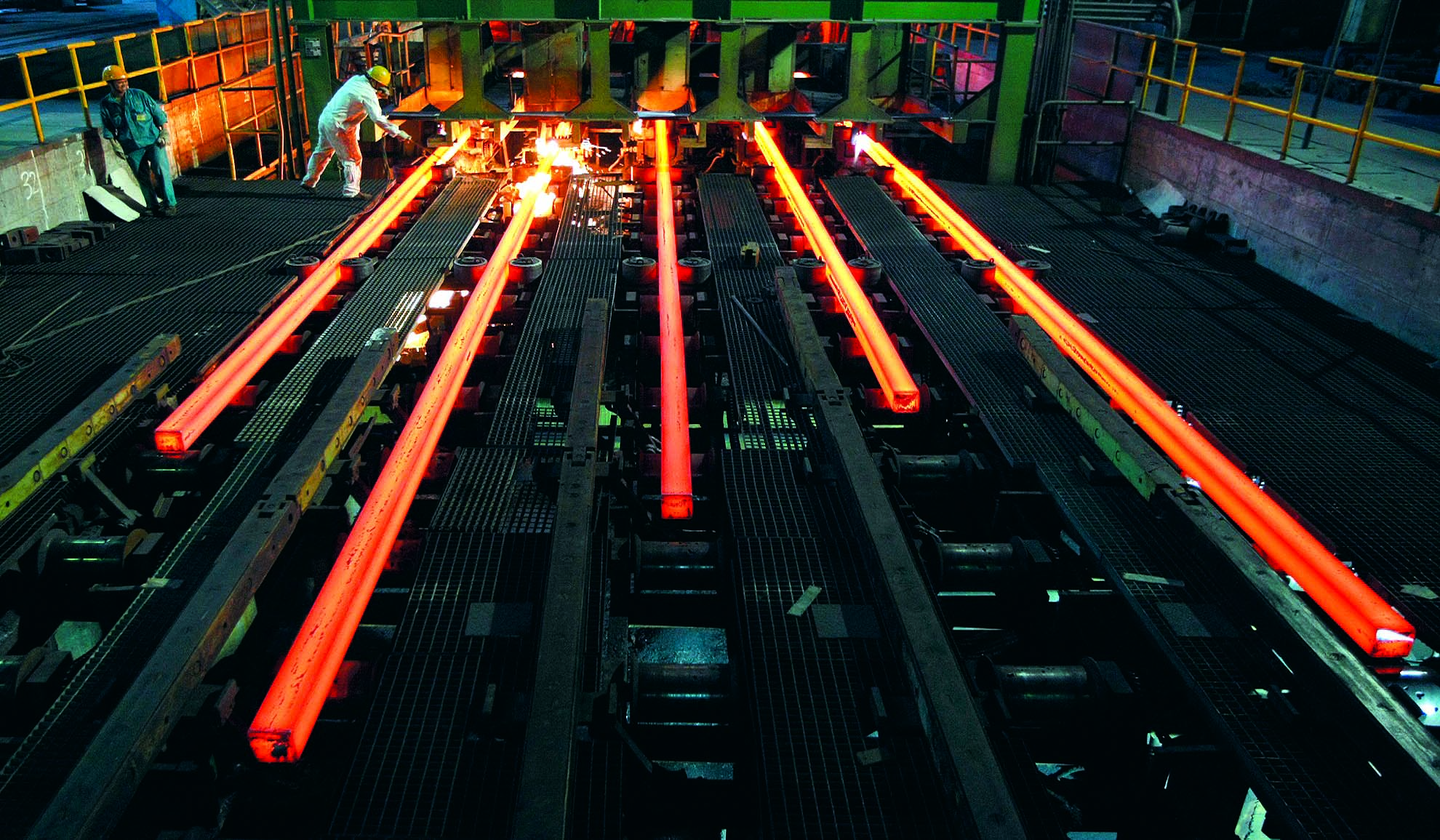Iran is the leading iron ore and direct-reduced iron producer, and the second biggest steelmaker after Turkey in the Middle East and North Africa region, the US Geological Survey reported in a recent report on Iran's nonfuel minerals.
In the last Iranian year (March 2015-16) the country's production of iron ore concentrate stood at 25 million tons. 2015's DRI output remained at 14.5 million tons, whereas pig iron output dropped by about 12% to 2.4 million tons.
Iran’s iron ore production has nearly tripled over the past 10 years and continues to grow at an annual rate of 10%. If sustained, the rate of growth would be sufficient to meet the government’s 2025 target output of 66.2 million tons of iron ore.
In 2015, Iran exported 14.8 million tons of iron ore, down 35% compared with 21.8 million tons in 2014. The country was the world's 11th leading exporter of the steelmaking material. Exports were projected to decrease to less than 10 million tons by 2017 owing to increased consumption of iron ore by domestic steel producers and declining global prices.
Most of Iran’s iron ore exports were received by China. In 2015, exports to China decreased by 40% from 2014 to 13.2 million tons, owing primarily to prevailing low global iron ore prices.
There were 165 iron ore mines in operation in 2015. However, eight mines accounted for about 86% of Iran’s total reserves. The Sangan, Golgohar and Chadormalu mines, in which Iranian Mines & Mining Industries Development & Renovation–the country's largest state-owned mining holding company–owned minority shares, were the largest iron ore mines operating in the MENA region with reserves of 1.2, 1.1 and 0.4 billion tons, respectively.
In March 2015, IMIDRO announced the discovery of 200 million tons in new iron ore reserves at Sangan Mine. The leading producers of iron ore were Chadormalu Mining and Industrial Company, Golgohar Iron Ore Company and Iran Central Iron Ore Company.
Privately-owned iron ore mines had a total capacity of 12 million tons/year. As almost all of their output was exported, they accounted for about 20% of domestic production, but nearly half of Iran’s iron ore exports in 2014.
Approximately 70% of private capacity went offline from late 2014, when about 6 million tons of capacity had shut down, to early 2016 owing to low global iron ore prices, lack of export competitiveness caused by operational costs and increase in mining royalty enacted in March 2015.
Iran’s production of iron ore pellets and DRI is projected to increase with the construction of multiple new iron facilities. In addition, the Golgohar and Sangan mines plan to initiate pellet production in the second half of the current Iranian year, increasing capacity by more than 5 million tons per year, which would reduce the country’s reliance on imports.
In February 2016, Danieli Group of Italy and IMIDRO launched the Persian Metallics project with an output target of 6 million tons/year of pellets for steelmaking using electric arc furnace technology in southern Iran. As of February 2016, KIOCL Ltd. of India planned to build an iron ore pellet complex with a capacity of 1.1 million tons/year and Hormozgan Steel Company planned to nearly double the capacity of its DRI plant in Bandar Abbas, Hormozgan Province, to 3 million tons/year.
> Steel Industry Runs Below Capacity
Although Iran is the second biggest steelmaker in the MENA region after Turkey, one-half of its downstream industry either produced below capacity or remained nonoperational in early 2016.
In 2015, the country’s production of crude steel shrank by about 2% to 16.1 million. About 83% of steel production were based on electric arc furnace technology.
To reach the government’s 2025 target output of 55 million tons of crude steel, an average annual growth rate of 11% would be required starting in 2015 compared with 7% registered in the previous decade. It would also require Iran to boost its production capacity of iron ore concentrate to 53.5 million tons from the current 44 million tons; sponge iron, to 58 million tons from 26 million tons; and pellets, to 88 million tons from 28 million tons.
In 2015, Iran exported 4.1 million tons of steel products valued at about $7 billion. The country’s steel exports are expected to reach 7 million tons in 2025.
Iran’s leading steel-producing companies were Mobarakeh Steel Company, Khouzestan Steel Company and Esfahan Steel Company, with market shares of 47, 23 and 20%, respectively in 2015. Esfahan Steel Company, the sole user of blast furnace technology in Iran, had a total capacity of 3.6 million tons/year.
IMIDRO planned four major plant construction projects to increase the sector’s production capacity, including multiple steel plants in Bandar Abbas and the Arvand Free Trade Zone, with total crude steel capacities of 2.4 and 5 million tons/year, respectively, and plants in Chabahar and the Island of Qeshm, with capacities of 1.6 million tons/year each.
The joint construction of three new steel plants along Iran’s southern coast by Kish South Kaveh Steel Company, Arvand Jahanara Steel Company and Kuwait’s United Steel Industrial Company was planned to turn the Arvand FTZ into Iran’s steel production and export hub with its own powerplants for energy self-sufficiency.
Three new steelmaking projects were launched in Iran in 2016. In February, SKS launched the second phase of its project to double production capacity of three steel plants in Bandar Abbas to 2.4 million tons/year.
The company expected to complete the expansion in March 2017, at which point it would account for about 10% of Iran’s annual steel production. Also in February 2016, POSCO of Republic of Korea signed an agreement with Pars Kohan Diarparsian Steel to begin the joint construction of a 1.6-million ton/year steel plant in Chabahar in 2017 and to add facilities for the production of cold-rolled and galvanized steel in 2019.
In April 2016, Danieli signed an agreement with Butia Iranian Steel Company to jointly construct a 1.5-million ton/year steel plant.


